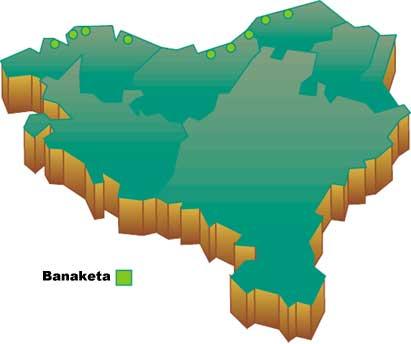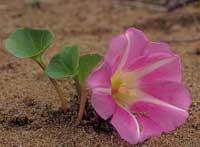Creeping sand hills plant: DUNE EVAPORATION

Through this beautiful species that we have chosen for this number, we will be able to know the psamófila vegetation. Although we will analyze evaporation in the dunes, we will see some keys about your family and your gender before immersing yourself in it.
Many of the conbolbulaceae are usually climbing plants, such as the white left, sometimes they can also be parasitic and usually have large flowers of radial symmetry. Within this family are known five genera in Europe, although one of them, the Ipomoea, is native to South America and is naturalized in southern Europe. In Euskal Herria there are also four genres mentioned. In addition, two of the three species described in Europe appear within the genus Calystegia.

But we go to the point. Evaporation in the dunes is one of the most beautiful psamophilic plants. It is creeping and forms on the sand a color-fixing net. Its leaves are somewhat fleshy and have a renal shape. The flowers are also striking and have a funnel-shaped corolla that tops a long pendenulum. It is large (4-5 cm) and light pink. It flowers especially between May and July. The fruit is a capsule of four leaflets, with black circular seeds inside.
This plant usually extends in mobile areas of dunes and beaches, and in the Basque Country it happens so, that is, in the last areas that offer this possibility. This species was discovered in 1870 by the botanists Willkomm and Lange in San Sebastian and Portugalete. The research of other botanists has allowed us to know that at present it could be found in other areas of our coast, but unfortunately, the human pressure that is being imposed in many regions has made disappear between us this beautiful plant.
The Land of the Dunes is also used as medicinal herb by many, because thanks to a resin it possesses is a great purgative. Its rhizome is also used to cure hydropesis, paralysis, scurvy, and rheumatism.
Family: Conbolbulaceae |
Buletina
Bidali zure helbide elektronikoa eta jaso asteroko buletina zure sarrera-ontzian











